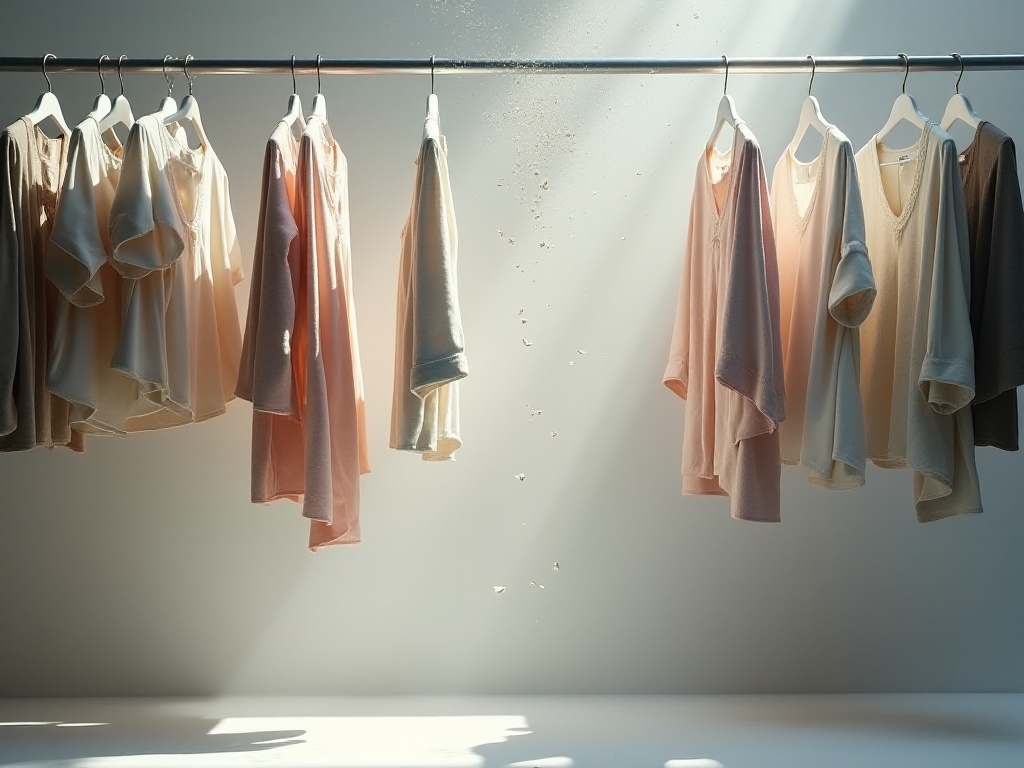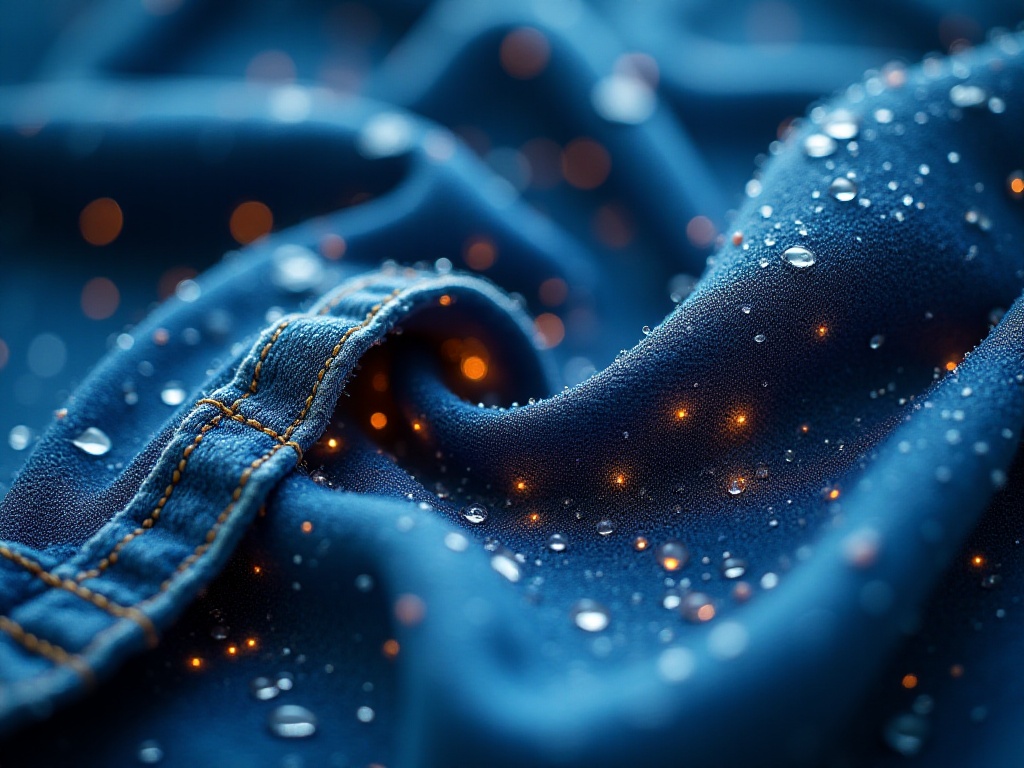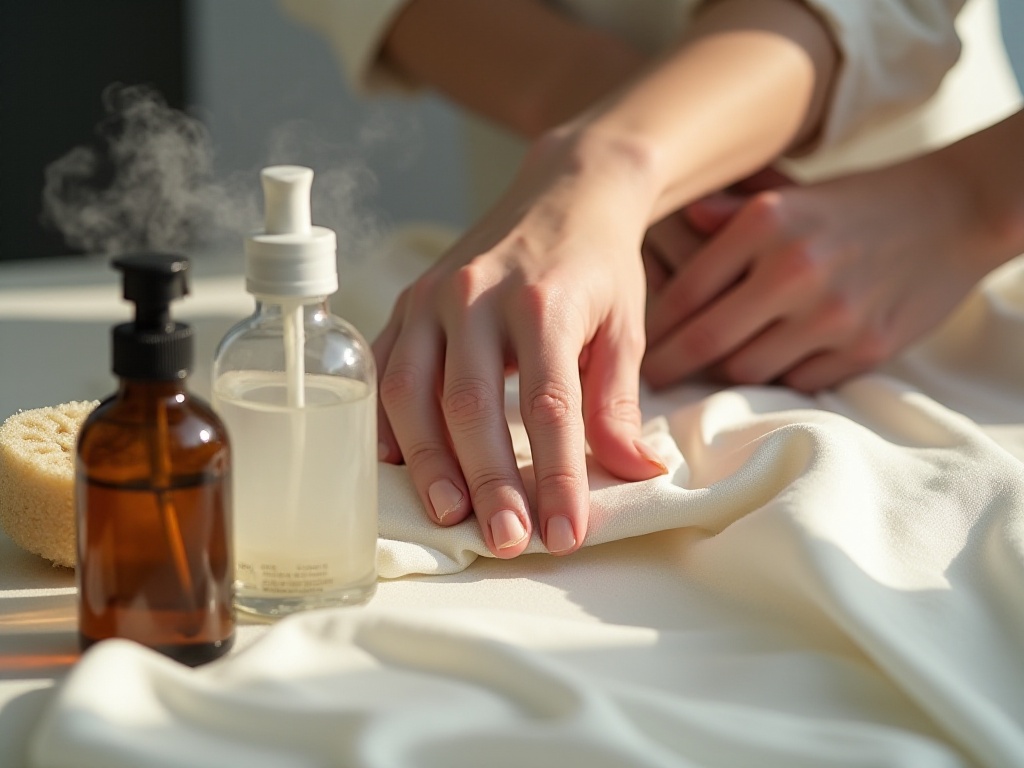Introduction
While organizing my closet, I often find myself deeply puzzled: why do my clothes always look more worn than those of my peers? The other day while shopping, I ran into my college friend Xiaomei. She was wearing a coat she bought at least three years ago, and it still looked so premium. Yet my coat of similar price bought just two years ago already looks old. This made me start to reflect: what exactly went wrong?
After years of in-depth research and practice, I finally found the answer. It turns out it's not the clothes themselves, but our care methods that might be completely wrong. Today, I want to share with you my insights on clothing care from these years, hoping to help your clothes regain their vitality.
Challenging Common Beliefs
"Clothes should be washed when dirty" - this is probably a concept we've all been taught since childhood. But wait, is this idea really correct? Let me tell you a surprising fact: excessive washing is actually the number one killer of your clothes!
I remember when I first started working, I washed my favorite white shirt almost daily. As a result, in less than six months, the shirt had already yellowed and developed pills, which really frustrated me. Later, after extensive research, I learned that each washing process is like a "violent attack" on clothes. The agitation in the washing machine causes fabric fibers to rub against each other, and the chemical components in detergents soften the fiber structure - these seemingly gentle processes are actually gradually wearing out your clothes.
Moreover, have you noticed that those luxury coats that cost tens of thousands always have labels saying "dry clean recommended"? This isn't them being pretentious, but because they know well: excessive washing indeed damages fabrics. Even my boyfriend's suits that cost thousands each are only dry cleaned after multiple wears, which made me seriously doubt the notion of "wash clothes when dirty."

The Art of Washing
Through years of exploration, I've developed a scientific washing approach. First, we need to learn how to categorize clothes:
For undergarments and socks that are worn next to skin, they do need to be washed after each wear. This is because these items directly contact the skin and absorb sweat and dead skin cells. I have a small habit of having dedicated washing basins and drying areas for intimate apparel, never mixing them with other clothes.
For daily outerwear like shirts and T-shirts, they don't actually need to be washed every time. For instance, the shirts I wear to work are usually washed after 2-3 wears. After each wear, I hang them on the balcony to air out, and they still feel fresh the next day. Of course, if it's particularly hot weather or after exercise with sweating, then immediate washing is needed.
For heavy clothes like coats and jackets, the washing frequency can be even lower. My favorite camel coat might only be washed 1-2 times per winter. I usually use a professional clothing brush to gently remove surface dust, then hang it in a ventilated area to remove odors. This not only keeps clothes clean but also protects the fabric to the maximum extent.
As for cashmere sweaters, these are the most delicate. I have a cashmere sweater I bought last year that I've only washed once all winter. You might find this incredible, but the fact is: cashmere, being a natural fiber, has self-cleaning properties, and excessive washing actually damages its fiber structure. My method is: after each wear, I lay it flat on the balcony to air out for a few hours, then gently brush it with a professional wool brush. This maintains cleanliness while avoiding damage from excessive washing.

The Art of Sorting
When it comes to laundry, many people just toss clothes into the washing machine without a second thought. This is a major mistake! The correct approach is to strictly sort by fabric and color.
My clothing sorting method is as follows: first divide by color into dark and light systems. Dark clothes will definitely bleed color on their first wash, and if mixed with light-colored items, it will at best make light clothes appear gray, at worst cause staining.
Then sort by fabric material. Cotton and polyester, being sturdy and durable, can be washed together. But delicate fabrics like lace and silk need to be hand washed or dry cleaned separately. Why be so particular? Because different fabrics have different levels of wear resistance - putting fragile fabrics with rough ones is like making a rabbit dance with an elephant, how could there not be problems?
One particularly important point: denim must be washed separately! I learned this the hard way when I first bought dark jeans, not knowing denim bleeds color, and washing them with other clothes turned my favorite white T-shirt completely blue. Since then, I've always washed my denim items separately, and the water temperature must be kept below 30 degrees to minimize color fading.
Denim Care
Speaking of denim clothing, this is truly a topic worthy of separate discussion. Many people have experienced this: newly bought dark jeans fade and turn white after not much wear, seriously affecting the overall look. This can actually be avoided!
Last year I did an interesting experiment: I bought two identical pairs of Uniqlo jeans at the same time. One I washed frequently in the traditional way, while the other I cared for using my researched method. Specifically, this meant minimizing washing, spot cleaning when there were stains, and mainly relying on airing out to remove odors. If washing was absolutely necessary, I would turn the jeans inside out and quickly rinse them in cold water, with the entire process not exceeding 10 minutes.
The results after six months were very obvious: the frequently washed pair had faded to white and showed obvious wash marks at the knees. In comparison, the carefully maintained pair still retained its beautiful dark blue color, and the fabric texture was also better.
Besides washing methods, there's another important aspect to jeans care: drying. Many people like to hang jeans on hangers to dry, which can easily cause them to lose shape. The correct method is: fold the jeans in half, clip them at the waistband with two clothespins, then hang to dry. This not only maintains the pants' shape but also allows water to drain evenly, preventing localized fading.

Delicate Care
When it comes to caring for delicate clothing, it's truly a technical skill. Take silk garments for example - many people think silk is particularly difficult to care for, but it's actually not hard at all if you master the essentials.
First, silk garments absolutely cannot be washed with regular detergent, as regular detergent is too alkaline and will damage silk fibers. I always use specialized silk cleanser, with water temperature strictly controlled below 30 degrees. When washing, use gentle squeezing motions - never twist or wring, as this can easily deform or wrinkle the fabric.
Drying after washing is also crucial. Silk garments are best hung on special non-slip hangers in a ventilated, shady place to air dry naturally. Never dry in direct sunlight, as this can make silk fibers brittle. If the weather isn't good, you can also gently absorb excess water with a towel, then lay flat on a drying rack to dry in the shade.
Wool sweater care also has its techniques. Many people find wool sweaters particularly prone to pilling, but this is also caused by improper care. I never throw my wool sweaters directly into the washing machine, instead opting for hand washing or dry cleaning. When hand washing, the water temperature must be moderate - too cold or too hot will damage wool fibers. After washing, don't wring dry; use a towel to gently absorb water, then lay flat to dry.
Here's another tip: if you notice slight pilling on a wool sweater, you can use a professional pill remover to treat it. But be careful with the pressure - too much force will damage the fibers. I usually gently brush with a soft brush after each wear, which helps prevent pilling.
Storage Methods
When it comes to clothing storage, this is also a technical skill. Many people might think clothes can just be hung or placed any which way. But incorrect storage methods can cause your clothes to suffer damage without you realizing it.
First, let's talk about hanger selection. My closet is full of wooden hangers - although they're more expensive than regular hangers, they're absolutely worth it. Plastic hangers can deform over time, while metal hangers might leave ugly shoulder marks on clothes. Wooden hangers are not only aesthetically pleasing but also evenly support the weight of clothing, preventing deformation.
Different types of clothing require different storage methods. Coats and suits that need to maintain their shape must be hung. Knits and T-shirts that easily lose shape are better folded. There's technique to folding too: don't fold too tightly, leave appropriate space to let the clothes "breathe."
Another important detail: closets must have dehumidifiers and moth-repellent sachets. I previously neglected this point and as a result, a beloved cashmere sweater got several small holes from moths - it was heartbreaking. Now I regularly replace dehumidifiers and place natural fragrance bags in various corners of the closet, which both prevents moths and keeps the closet fresh.

Immediate Treatment
Regarding stain treatment, I have a "golden three minutes" rule: action must be taken within three minutes of discovering a stain. Why three minutes? Because during this time period, the stain hasn't completely penetrated the fibers, making it relatively easy to treat.
I always carry stain removal wipes for emergencies. For example, the other day at a café, I accidentally splashed coffee on my white shirt. I immediately used a wipe to gently press the stained area (note: press, don't rub - rubbing will spread the stain), then used a professional stain remover as soon as I got home. In the end, you couldn't see any trace of the stain on the shirt.
Different types of stains require different treatment methods. For oil stains, it's best to first absorb surface oil with oil-absorbing paper, then treat with stain remover. Juice stains should be immediately rinsed with clean water to prevent sugar from penetrating the fibers. As for stubborn stains like ink, it's best to take them directly to the dry cleaners for treatment rather than attempting to handle them yourself, to avoid making things worse.

Seasonal Transitions
When seasons change, many people become overwhelmed with organizing clothes. Actually, seasonal storage also has its techniques - doing it right not only helps preserve clothes better but also makes them more comfortable to wear next season.
First, all clothes to be stored must be clean and dry. Even clothes that look clean should be washed before storage. This is because clothes we've worn retain sweat and dead skin cells, which can cause yellowing or odors during long-term storage.
After washing, it's particularly important to wait until clothes are completely dry. Storing damp clothes can easily lead to mold growth. I choose sunny days for drying, letting sunlight provide final disinfection for the clothes. When drying, be careful not to expose clothes to direct sunlight - it's best to choose a shaded, ventilated area.
Before storage, I spray clothes with professional moth repellent. This step cannot be skipped, as moths love to eat natural fibers, especially sweaters and silk garments. After spraying moth repellent, wait until it's completely dry before storing.
When storing, I choose different storage methods based on fabric type. Puffy items like down jackets are best stored in vacuum bags, which saves space without affecting the fabric. But delicate materials like sweaters and silk must be stored in breathable fabric bags - never use plastic bags, as they can cause clothes to develop odors from lack of ventilation.
Additionally, storage box selection is important. I always choose boxes with ventilation holes to maintain air circulation. Line the box with a moisture-proof mat and place several dehumidifying packets inside to ensure clothes remain dry throughout the storage period.
Final Thoughts
Through these years of research and practice in clothing care, I've deeply realized: caring for clothes isn't a simple matter - it requires our time, effort, and patience. But when you see your carefully maintained clothes still looking fresh and new, all the effort becomes worthwhile.
Like that coat I've been wearing for three years - because I've consistently maintained proper care methods, it still looks new. Every time I wear it out, I receive compliments from friends - this sense of achievement is priceless.
Actually, taking good care of clothes isn't just about saving money - it's an attitude toward life. When we learn to cherish each piece of clothing and care for them mindfully, we're also cultivating our own focus and patience toward life.
These care insights are what I've figured out through years of exploration, and there's certainly room for improvement. If you also have any special clothing care experiences, welcome to share them in the comments. Let's discuss together and help each beloved piece of clothing maintain its lasting brilliance and accompany us further on our journey.
Related articles




